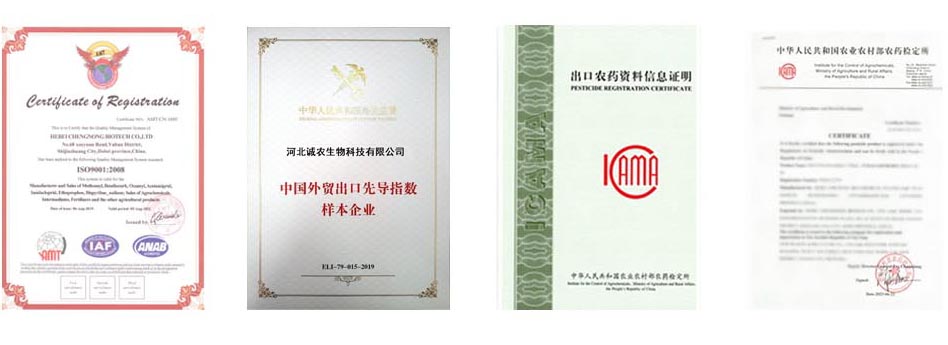
Aug . 06, 2024 08:04 Back to list
Understanding the Uses and Benefits of Flutriafol in Agricultural Practices and Fungicide Applications
Flutriafol is a systemic fungicide belonging to the triazole class of chemicals. Its primary use is in agriculture, where it plays a significant role in managing various fungal diseases that affect a range of crops. In this article, we will explore the purpose of flutriafol, its mechanisms of action, the crops it is typically used on, and the implications associated with its use.
Purpose of Flutriafol
The main purpose of flutriafol is to control fungal diseases that can adversely affect crop yield and quality. It is particularly effective against pathogens such as *Helminthosporium*, *Fusarium*, and *Rhizoctonia*, which can cause a variety of diseases like leaf spots, root rot, and blights. By preventing these diseases, flutriafol helps ensure that farmers can produce healthy and robust crops, thus contributing to food security and agricultural sustainability.
Mechanism of Action
Flutriafol works by inhibiting the biosynthesis of ergosterol, a crucial component of fungal cell membranes. By disrupting the production of ergosterol, flutriafol compromises the integrity of the fungal cell membrane, leading to cell lysis and ultimately the death of the pathogen. This mode of action not only provides effective control over existing infections but also helps in preventing new infections from taking hold, making it a valuable tool in integrated pest management strategies.
Application on Different Crops
flutriafol para que sirve exporter

Flutriafol is widely used across various agricultural sectors. It is commonly applied to cereals, including wheat and barley, where it helps protect against leaf blotch and other foliar diseases. Additionally, it is utilized in fruit crops, such as grapes and apples, where it can manage diseases like powdery mildew and apple scab. Its versatility makes it an integral part of crop protection programs in both conventional and organic farming settings.
Environmental and Health Considerations
While flutriafol is an effective fungicide, its use is not without controversy. Concerns about its environmental impact and potential effects on human health have been raised. Studies indicate that like many chemical pesticides, improper use of flutriafol can lead to soil and water contamination. This raises questions about the sustainability of its application and the potential for developing resistant strains of fungi.
Farmers and agronomists are encouraged to use flutriafol judiciously, adhering to recommended dosages and application timings to minimize negative impacts. Integrated pest management practices, which combine chemical treatment with biological control and cultural practices, can help mitigate some of these risks while still effectively managing fungal diseases.
Conclusion
Flutriafol serves a critical role in modern agriculture by providing effective control of a range of fungal diseases. Its unique mode of action and effectiveness across various crops make it a valuable asset for farmers. However, as with all chemical pesticides, it is essential to consider its environmental and health impacts. Sustainable agricultural practices, including integrated pest management, can help ensure that the benefits of flutriafol are realized while minimizing its drawbacks. As research continues to evolve, finding a balance between effective disease control and environmental stewardship remains a key goal for the agricultural community.
-
Insecticide Spirotetramat 11% + Thiacloprid 11% SC at Good Price
NewsJul.30,2025
-
Best Abamectin SDS - Premium Quality & Reliable Safety Data
NewsJul.29,2025
-
Agrochemicals Pesticides Solutions for Sustainable Farming
NewsJul.29,2025
-
High-Quality Tebuconazole Fungicide for Crop Protection at Best Price
NewsJul.29,2025
-
Chlorfenapyr 8% + Clothianidin 20%SC Pesticide Mixture for Effective Pest Control
NewsJul.28,2025
-
Best Azoxystrobin Difenoconazole Supplier for Crop Protection
NewsJul.28,2025
